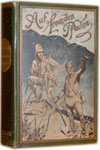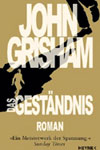De volatilium aure, pp. 420-424 and 4 plates, in: De Bononiensi scientiarum et artium instituto atque academia commentarii, vol. VI
GALVANI, Luigi
Verkäufer
Landmarks of Science Books, Richmond, Vereinigtes Königreich
Verkäuferbewertung 5 von 5 Sternen
![]()
AbeBooks-Verkäufer seit 17. März 2016
Beschreibung
Beschreibung:
First edition of this paper on the physiology of hearing by Galvani, famous for his 'De viribus electricitatis in motu musculari commentarius', published in the same journal as the present paper in 1791, "which inaugurated the modern epoch in electricity" (Evans). "Between 1768 and 1772 Galvani delivered at the Academy of Sciences four papers on the hearing of birds, quadrupeds, and humans. He had discovered some structures in the ear of birds never detected before, such as the circular hole in the vestibule and a duct analogous to the aqueduct of Fallopius in humans. Adopting a morphophysiological approach analogous to that used in his research on the kidney, Galvani described the functions performed by these structures. He also pointed out the analogies existing with the human ear, stressing the fact that they were much more numerous than it was commonly thought. The ultimate aim of Galvani was to understand the functioning of the hearing apparatus in the general context of his long-standing research on the different senses. Indeed, he was probably planning a systematic physiological study of sense organs, but he abandoned the project after this research on hearing. Among the reasons why he gave up this field of research was probably the fact that in 1772 Scarpa published his 'De Structura Finestrae Rotundae Auris,' where were expounded many of the observations that Galvani had already announced but had not published yet. According to some evidence, Scarpa had attended Galvani' s public dissertations, and he might have appropriated some of his discoveries, without acknowledging him. As a matter of fact the publication of Scarpa's work gave rise to a harsh debate on the priority of the discoveries, which involved not only the scientific community of Bologna and Modena, where Scarpa was professor of anatomy, but spread also to Padua and Pavia. As to Galvani, he probably kept a low profile, and when, in 1783, he finally published in the Commentarii of the Institute of Sciences a memoir containing some of his observations that Scarpa had not included in his work [the offered work], he referred to him without any resentment" (Bresadola, 'Medicine and science in the life of Luigi Galvani (1737-1798),' Brain Research Bulletin 46 (1998), 367 380). Galvani's paper is contained in the complete volume VI of 'De Bononiensi scientiarum et artium instituto atque academia commentarii'; this contains numerous other articles by Condorcet, Matteucci, Mundini, Zanotti, etc., including a long article by Vincenzo Riccati in four parts, 'De moti rectilineo corporis attracti, aut repulsi a centro mobili' (pp. 138-229 and 6 plates). The Accademia delle Scienze dell'Istituto di Bologna was formally inaugurated in 1714. It initially had five professorial chairs. Marsigli's vision was that the Accademia delle Scienze would carry out scientific research in the tradition of Galileo and Newton, but the Institute did not come up to Marsigli's expectations and in 1728 he abandoned his project in disgust. Marsigli died in 1730. The institute published its first volume of Proceedings in 1731, three volumes between 1745 and 1747, and five more volumes before the end of the eighteenth century. The institute helped pull Bologna out of its provincial isolation, reengaging with centers such as the French Academy of Sciences and the British Royal Society. 4to, pp. [viii], 112, [2], 428, [2], 21 plates (light damp stain to upper margin). Contemporary vellum with red lettering-piece on spine (a bit soiled, spine worh with minor loss, label chipped). Bestandsnummer des Verkäufers ABE-1600537233129
Bibliografische Details
Titel: De volatilium aure, pp. 420-424 and 4 plates...
Verlag: Ex Typographia Laelii a Vulpe
Erscheinungsdatum: 1783
Einband: Hardcover
Zustand: Very Good
Auflage: 1st Edition
AbeBooks ist ein Internet-Marktplatz für neue, gebrauchte, antiquarische und vergriffene Bücher. Bei uns finden Sie Tausende professioneller Buchhändler weltweit und Millionen Bücher. Einkaufen bei AbeBooks ist einfach und zu 100% sicher — Suchen Sie nach Ihrem Buch, erwerben Sie es über unsere sichere Kaufabwicklung und erhalten Sie Ihr Buch direkt vom Händler.
Millionen neuer und gebrauchter Bücher bei tausenden Anbietern
Neue und gebrauchte Bücher
Neue und gebrauchte Exemplare von Neuerscheinungen, Bestsellern und preisgekrönten Büchern. Eine riesige Auswahl an günstigen Büchern.
Antiquarische Bücher
Von seltenen Erstausgaben bis hin zu begehrten signierten Ausgaben ? bei AbeBooks finden Sie eine große Anzahl seltener, wertvoller Bücher und Sammlerstücke.
Versandkostenfreie Bücher
Hier finden Sie viele hunderttausend neue, gebrauchte und antiquarische Bücher, die Ihnen unsere deutschen und internationalen Händler versandkostenfrei liefern.





